My recommendations of places to visit in Rio de Janeiro..
Cristo Redentor
 Of course when you’re in Rio de Janeiro you have to visit the Corcovado mountain, with the world famous Jesus Christ statue on top of the city who watches over the city. In 1932, this statue was placed on the 713 meter high mountain in the Tijuca Forest. This symbol stands for peace and is still visited by millions of visitors. The Brazilians are also very proud of their symbol of the city. A tram takes you almost to the top. After the last 220 steps you will get a amazing view of Rio de Janeiro.
Of course when you’re in Rio de Janeiro you have to visit the Corcovado mountain, with the world famous Jesus Christ statue on top of the city who watches over the city. In 1932, this statue was placed on the 713 meter high mountain in the Tijuca Forest. This symbol stands for peace and is still visited by millions of visitors. The Brazilians are also very proud of their symbol of the city. A tram takes you almost to the top. After the last 220 steps you will get a amazing view of Rio de Janeiro.
Corcovado Mountain, Rio de Janeiro
Copacabana
 The world-famous beach Copacabana is the most famous beach of Rio de Janeiro. The 4-km long sandy beach attracts people of all classes and modes that come sunbathing, swimming, jogging, cycling or skating along the promenade. Copacabana is nicknamed ‘ Princesinha do Mar ‘, or: little Princess of the sea. The neighborhoods surrounding it are a mix of rich and poor and are characterized with many luxury hotels and apartments, but also smaller Ladeira dos Tabajaras and slums as Morro dos Cabritos;
The world-famous beach Copacabana is the most famous beach of Rio de Janeiro. The 4-km long sandy beach attracts people of all classes and modes that come sunbathing, swimming, jogging, cycling or skating along the promenade. Copacabana is nicknamed ‘ Princesinha do Mar ‘, or: little Princess of the sea. The neighborhoods surrounding it are a mix of rich and poor and are characterized with many luxury hotels and apartments, but also smaller Ladeira dos Tabajaras and slums as Morro dos Cabritos;
Copacabana, Rio de Janeiro
the Tijuca Forest

Beautiful waterfalls and large rock formations can be found in the Tijuca Forest, a huge rainforest/national park on the coast of Rio that is 60 million years old. The word ‘ Tujica’ is derived from the Tupi Indians, who lived in this area in the sixteenth century . A red tram, the Corcovado Rack Railway, drives through the rain forest just below the famous statue of Jesus Christ. In addition, the park has more than two hundred hiking trails that you can traverse with a jeep. The streams, rivers and the sometimes up to 30 metres high waterfalls provide good cooling.
Tijuca Forest, Rio de Janeiro
The Pâo the Acúcar
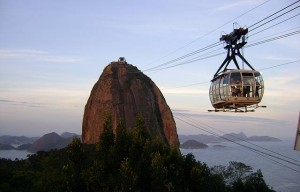 The Pâo the Acúcar, The Sugarloaf Mountain, the sugar loaf. These are all names for the 396 meter high mountain you can see from any place in Rio de Janeiro. It is near Urca on a peninsula of the Guanabara Bay. The mountain is one of the seven ‘ morros ‘ of granite that rise from the Atlantic Ocean near Rio de Janeiro. With a glass cable car you can go all the way to the top. Breathtaking views, provided that there are no clouds, for daredevils without a fear of heights. If you are more adventurous, you can also climb the mountain.
The Pâo the Acúcar, The Sugarloaf Mountain, the sugar loaf. These are all names for the 396 meter high mountain you can see from any place in Rio de Janeiro. It is near Urca on a peninsula of the Guanabara Bay. The mountain is one of the seven ‘ morros ‘ of granite that rise from the Atlantic Ocean near Rio de Janeiro. With a glass cable car you can go all the way to the top. Breathtaking views, provided that there are no clouds, for daredevils without a fear of heights. If you are more adventurous, you can also climb the mountain.
Avenida Pasteur 520, Urca, Rio de Janeiro
Theatro Municipal
 At the busy square Cinelândia is the Municipal Theater of Rio de Janeiro. The entrance alone will open your mouth. The decoration in and around the building is made of real gold. Inside it is just as if you entered, a museum with beautiful works of Brazilian artists such as the painter Rodolfo Amoedo and the sculptural artist Rodolfo Bernardelli. Please note: it is strictly forbidden to enter the theater with slippers, shorts or sleeveless shirts. So cover yourself!
At the busy square Cinelândia is the Municipal Theater of Rio de Janeiro. The entrance alone will open your mouth. The decoration in and around the building is made of real gold. Inside it is just as if you entered, a museum with beautiful works of Brazilian artists such as the painter Rodolfo Amoedo and the sculptural artist Rodolfo Bernardelli. Please note: it is strictly forbidden to enter the theater with slippers, shorts or sleeveless shirts. So cover yourself!
Rua Marechal Aguinaldo Caiado de Castro
Estádio do Maracanâ
 You will find no way around it if you’re in Brazil: football. The country is inextricably linked to this sport. The stadium where the most important games are played is the Maracanâ Stadium. This 65-year-old stadium has room for spacious and eighty-two thousand spectators. Increasingly, this location is also used for other purposes, such as a concert hall. Stars like Tina Turner, Madonna and Paul McCartney, among others, have occurred. At the entrance of this “Temple”, you can see the statue of Bellini, the captain of the National team during the 1958 FIFA World Cup. The finals of the next World Championships will be played in this stadium.
You will find no way around it if you’re in Brazil: football. The country is inextricably linked to this sport. The stadium where the most important games are played is the Maracanâ Stadium. This 65-year-old stadium has room for spacious and eighty-two thousand spectators. Increasingly, this location is also used for other purposes, such as a concert hall. Stars like Tina Turner, Madonna and Paul McCartney, among others, have occurred. At the entrance of this “Temple”, you can see the statue of Bellini, the captain of the National team during the 1958 FIFA World Cup. The finals of the next World Championships will be played in this stadium.
Rua Professor Eurico Rabelo, Maracanâ
Rocinha
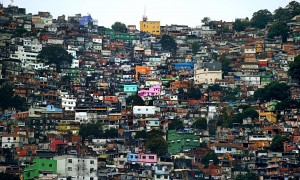 If you have not seen the slums or favelas, you don’t know the real Rio yet. The gap between rich and poor is still very big. Tourists can visit, accompanied by a guide, Rocinha, the largest favela ‘ of Rio. Approximately 300,000 people live in this favela. About 70% of the inhabitants of Rocinha comes from the poor northeastern part of the country. They came to Rio, in search of a better life, but were soon a disillusionment richer. Often families of more than six people are living together in one small room. Currently there are about 700 favelas in Rio. It’s better to not enter the favela without a guide. It is a poignant experience, which is not for every tourist.
If you have not seen the slums or favelas, you don’t know the real Rio yet. The gap between rich and poor is still very big. Tourists can visit, accompanied by a guide, Rocinha, the largest favela ‘ of Rio. Approximately 300,000 people live in this favela. About 70% of the inhabitants of Rocinha comes from the poor northeastern part of the country. They came to Rio, in search of a better life, but were soon a disillusionment richer. Often families of more than six people are living together in one small room. Currently there are about 700 favelas in Rio. It’s better to not enter the favela without a guide. It is a poignant experience, which is not for every tourist.
Rocinha, Rio de janeiro
Ilha Fiscal
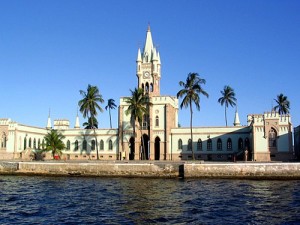 If you take the ferry to Niteroi in Rio de Janeiro or Paquetá, you come by a blue-green Castle that stands on its own island. The whole place has something magical. The building, to the hand of Adolpho Del-Vecchio, is a wonderful work piece and many of the original interior is housed in a small naval museum. During week days you can explore the island by boat, but there is a tour bus in the weekend that tours on the island and the rest of the marine base.
If you take the ferry to Niteroi in Rio de Janeiro or Paquetá, you come by a blue-green Castle that stands on its own island. The whole place has something magical. The building, to the hand of Adolpho Del-Vecchio, is a wonderful work piece and many of the original interior is housed in a small naval museum. During week days you can explore the island by boat, but there is a tour bus in the weekend that tours on the island and the rest of the marine base.
Ilha Fiscal
Fort Copacabana
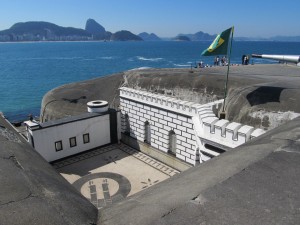 This fort, on the end of the beach of Copacabana, dates from 1914. Since 1987 there is also a artillery museum. Beside the large guns of the early 20th century you can also see armored weapons and rocket launchers. The fort has walls up to 12 metres thick, which were against impacts of a large cannon. One of the first things you encounter as you enter the fort is the commanders quarters. From the top of the fort you have a beautiful view over Rio. You can always lunch in Café do Forte, which is located on one of the outer walls of the fort.
This fort, on the end of the beach of Copacabana, dates from 1914. Since 1987 there is also a artillery museum. Beside the large guns of the early 20th century you can also see armored weapons and rocket launchers. The fort has walls up to 12 metres thick, which were against impacts of a large cannon. One of the first things you encounter as you enter the fort is the commanders quarters. From the top of the fort you have a beautiful view over Rio. You can always lunch in Café do Forte, which is located on one of the outer walls of the fort.
Praça Coronel Eugênio Franco, 1 – Posto 6 – Copacabana, Rio de Janeiro
Jardím Botanico
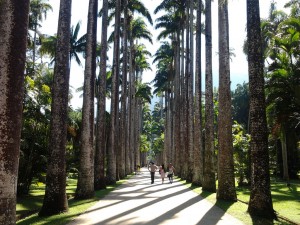 In the 140-hectare big park grow thousands of trees and more than 8000 tropical plants. In total there are no less than 235,000 plants and trees in this garden. In Portugal, João VI on 18704 had to flight for Napoleon. He founded this botanical garden, with the intention of a place where grow plants from other parts of the world. You come through an avenue of 134 huge palm trees of more than thirty meters high. This garden is mainly alive in the months of September and December, when everything is in full bloom. In this garden you can excape of the all-consuming hustle and bustle of Rio.
In the 140-hectare big park grow thousands of trees and more than 8000 tropical plants. In total there are no less than 235,000 plants and trees in this garden. In Portugal, João VI on 18704 had to flight for Napoleon. He founded this botanical garden, with the intention of a place where grow plants from other parts of the world. You come through an avenue of 134 huge palm trees of more than thirty meters high. This garden is mainly alive in the months of September and December, when everything is in full bloom. In this garden you can excape of the all-consuming hustle and bustle of Rio.
R. Jardim Botânico, 1008 – Jardim Botânico, Rio de Janeiro
